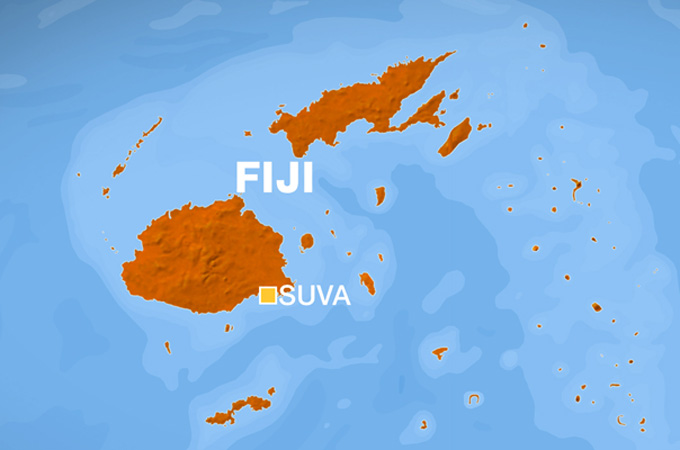Cyclone Winston toll rises as Fiji starts clean-up
Pacific island nation tries to pick up the pieces after deadliest storm to hit the country leaves trail of destruction.

Fiji has launched a clean-up after the most powerful cyclone in the Pacific island-nation’s history left a trail of destruction, killing at least 21 people, destroying homes and damaging infrastructure.
The storm struck the popular tourist destination overnight on Saturday, packing wind gusts of 325km an hour, according to the UN humanitarian agency OCHA.
Keep reading
list of 4 itemsDust storm turns sky orange over Athens
Photos: Athens turns orange under North Africa’s Sahara dust clouds
100,000 people evacuated from China flood zone
Fiji’s National Disaster Management Office said that 21 people had been confirmed dead on Monday.
Missing at sea
No immediate breakdown of the deaths was available but the Fiji Broadcasting Corporation reported many of the dead were from the hard-hit west of the country. Seven fishermen were also missing at sea.
Al Jazeera’a Andrew Thomas, reporting from Nadi, said that the country’s major cities of Suva and Nadi appeared to have escaped the brunt of the storm.
“But until proper information comes in from other areas, it is still hard to say that Fiji has dodged a bullet,” our correspondent said.
Winston was the first storm system to hit Fiji measuring a maximum Category Five.
“Homes have been destroyed, many low-lying areas have flooded,” Frank Bainimarama, the prime minister, said in a statement.
“In the aftermath of this great tragedy, many are without power and full access to water, and are cut off from communication.”
The cyclone, the strongest ever recorded in the southern hemisphere, flattened scores of homes, crippled infrastructure and forced terrified residents to shelter in evacuation centres.
Photographs taken from a Royal New Zealand Air Force plane showed the devastation wrought on remote villages that bore the brunt.
Many homes were reduced to piles of kindling, with roofing and furniture strewn about by winds that were strong enough to strip leaves and branches from trees.
Raijeli Nicole, Oxfam’s Pacific regional director, said that the scale of the disaster would only become apparent when communications were restored with remote communities.
“The Fijians are desperately trying to repair severed lines of communication, but they hold grave fears that the news waiting for them will be dire,” she said.
“Given the intensity of the storm and the images we have seen so far, there are strong concerns that the death toll won’t stop climbing today and that hundreds of people will have seen their homes and livelihoods completely destroyed.”
Aid agencies admitted that they had no idea about the full extent of the destruction, as Fijians shared pictures on social media of roofless houses, flooded streets and metal signposts bent over by the wild winds.
‘Assault on Fiji’
The capital Suva escaped the full fury of the storm but Iris Low-McKenzie, Save the Children Fiji chief, said it was still a terrifying experience.
“I’ve never experienced anything like this,” she said. “The noise was frightening as roofs were blown off homes and trees were ripped out by their roots.”
Bainimarama said that the storm amounted to an “assault on Fiji”, an impoverished nation of about 900,000 heavily reliant on its tourism industry.
“It is being described as one of the most powerful [storms] in recorded history … as a nation, we are facing an ordeal of the most grievous kind,” he said in a national address.

Bainimarama declared a state of natural disaster to remain in place for one month.
International tourists caught up in the disaster began to leave on Monday as flights resumed at Nadi airport after a two-day suspension.